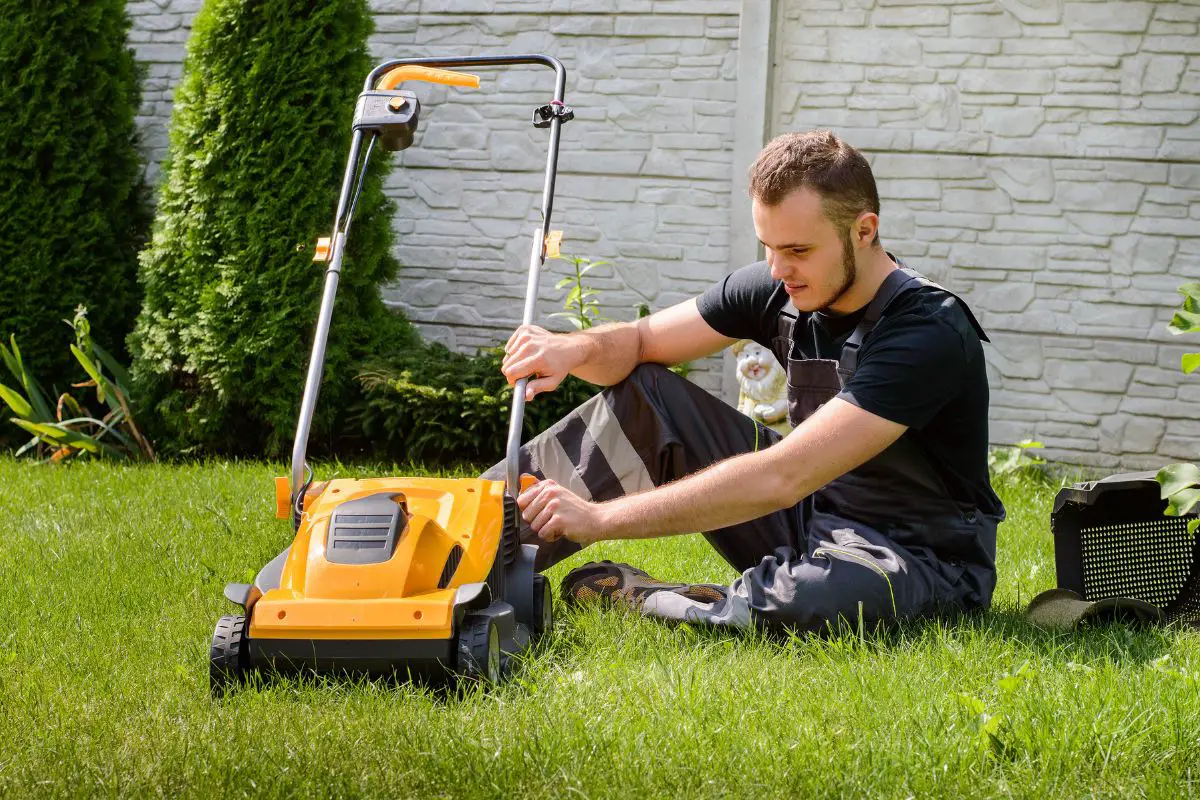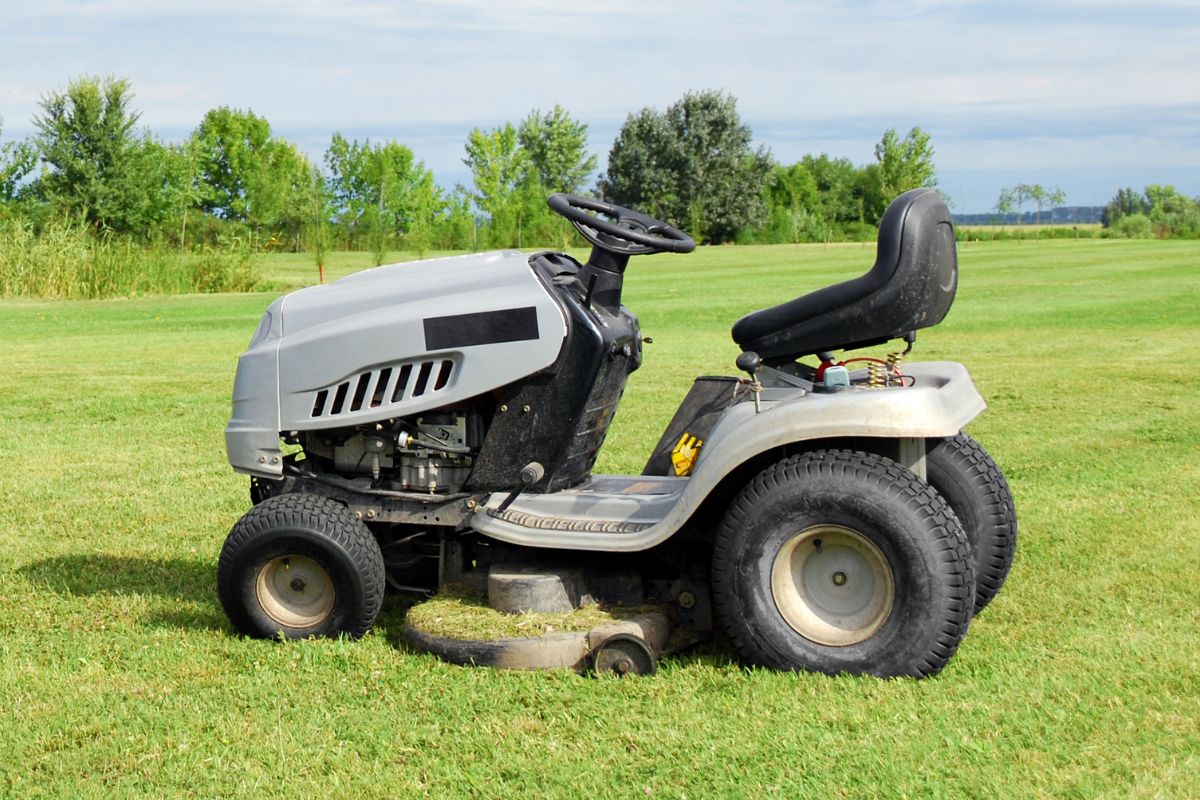Ask anyone you meet, there is something particularly frustrating about trying to start a lawn mower that isn’t working correctly.
It can induce a certain level of hatred for machines that may want to make you abandon your lawn altogether.
If your lawn mower isn’t starting properly, this doesn’t mean you’ll have an unkempt lawn forever.
A lawn mower that is having trouble starting indicates an issue with the machine, there are a few checks to do to account for underlying problems.
Learn here how to find what is causing your bad starter and how to bypass this to carry on using your mower.
What Is A Starter?
In order to understand what a bad starter is and how to overcome this, it’s important to understand what a starter is and how they work. An engine starter is an electrical motor bottled to the engine crankcase.
When you turn on the ignition, a small electrical charge is sent to the starter solenoid.
This closes a switch that creates a larger current that is sent to the starter motor. The starter motor then begins to rotate and engage the teeth of the flywheel.
What Does A Bad Starter Look Like?
There are a few signs that you have a bad starter on your lawn mower. These include:
- Strange noises such as grinding, clicking, or clinking
- The engine won’t start at all even with a fully charged battery
- Failure in the solenoid to click
- Whirring sound with no catch
Starting A Lawn Mower With A Bad Starter
There are a number of ways to start your mower, depending on the reason for it not starting in the first place.
As a bad starter is caused by electrical problems, there are a number of ways to get around this which we will cover below.

Check The Battery
The first check you should make is the battery, as this provides the electric current to start the engine of your mower. If the battery is flat or broken, there is no way to start the mower.
Charging the battery of the mower is easy to do with a charging cable and should take around eight hours to do so.
If the battery becomes wet as you charge it, this is a sign it’s leaking. Depending on how big the leak is, you may need to replace the battery altogether.
Small leaks can be sealed with electrical tape. When you do this, always wear safety gloves and glasses to avoid any acid burns to your person.
Batteries that aren’t leaking need to be checked with a multimeter. The battery’s voltage should always be 12 volts, if the voltmeter reading is below 12.4V after being fully charged then the battery must be replaced.
Check The Ignition Switch
Although unlikely, the ignition switch could be the fault here. Ensure there are no loose connections or damage due to corrosion on the back of the switch.
If you do notice any defects, this is likely the cause of your bad starter and the entire switch must be replaced.
Check The Leads
The cables that attach to the battery must be free to pass an electrical current through them.
If you notice battery deposits around the clamps that are dirty or corroded, the battery needs to be detached and the contact area cleaned.
To clean these areas, take a wire brush with a wooden or plastic handle to clean the affected areas. Then replace the leads and try the engine again.
Check The Solenoid
The solenoid is the switch that triggers the starter motor, if this doesn’t work then the motor isn’t going to start.
You’ll be able to notice this easily as it has three or four electrical lugs connected to the ignition and battery. Check for loose screws here and tighten any with pliers.
To check if the solenoid works, attach jumper cables to the large lug where the engine starter cable is and where the other lugs connect to the battery cable. If the engine starts with this method, it indicates the solenoid is the issue.
Alternatively, you can test this by connecting it to a 12 V power supply. When the battery is connected, test the solenoid for continuity using a multimeter. If there is no continuity, there is a fault in the solenoid.
How To Start A Mower With A Bad Starter
When the solenoid is the issue, there is still a chance you can get the main motor running and get that lawn neat and tidy. To do this, you need to bypass the solenoid and start the mower using the starter motor only.
Follow These Steps
- Place a metallic connection between the battery and the main starter. This is in place of the wire connection that is found between the solenoid and the battery switch. You can use the metal of a screwdriver here or a similar piece of metal.
- Try and start the motor by turning the key
- If you hear a whirring noise, this is good news and with a few more turns of the key you’ll be able to start the engine
If you can start the mower this way, it means there is a fault with your solenoid and it must be replaced. There are a number of reasons as to why your starter isn’t working such as age, damage, or a lack of power.
Safety Notes
Always make sure the engine is off when performing any maintenance on your lawn mower and ensure that you use the correct protective equipment.
If in doubt, always seek the advice of a professional rather than attempt the work yourself.
The Bottom Line
When a lawn mower starter isn’t working, do not lose all hope. Bypassing the solenoid can get the motor running and allow you to get your lawn mowed.
However, this is a short-term solution which usually indicates that you need to get the starter repaired by a professional.


